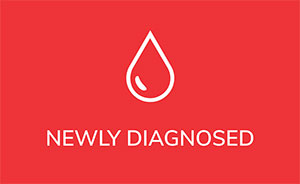In this video, Dr. Nicole Lamana, M.D., Associate Professor of Medicine in the Hematologic Malignancies Section of the Hematology Oncology Division at the Herbert Irving Comprehensive Cancer Center, Columbia University in New York City, is interviewed by CLL Society www.cllsociety.org, co-founder and Chief Medical Officer, Dr. Brian Koffman, M.D., a retired family physician and a CLL patient. This video was recorded at the International Workshop on CLL 2019, held in Edinburgh, Scotland www.iwcll2019.org.
In this interview, Drs. Lamana and Koffman discuss the important topic of when are imaging services appropriate in the diagnosis and treatment of CLL? It is the opinion of both these knowledgeable physicians that imaging services are overutilized. Drs. Lamana and Koffman are not alone as evidenced by this article by Dr. Chau Huynh, M.D. found on the CLL Society website https://cllsociety.org/2017/12/the-role-of-radiology-and-imaging-in-chronic-lymphocytic-leukemia/
Takeaways:
Dr. Lamana, opines that routine imaging of CLL patients is both controversial and has shown no real impact on overall survival or other outcome measures. It is her belief that imaging is not appropriate at the time of diagnosis. Further, the National Comprehensive Cancer Center Network (NCCN) Guidelines Version 4.20.20 for CLL / SLL do not include imaging as part of their consensus initial workup recommendations. Despite these recommendations, Dr. Koffman has found that 75-80 percent of patients he talks to a CLL Society educational sessions indicate that they received imaging services at the time of diagnosis.
So, you may ask, “when is imaging appropriate?” The use of directed rather than routine imaging is appropriate under the following conditions:
- If the patient has a complaint about a sudden change that might indicate lymph node or organ swelling to the point of impinging on a nerve or organ.
- Prior to initiation of treatment both as a baseline and to determine the tumor load as an indicator of the potential for tumor lysis syndrome which is caused by the rapid rupture of malignant cells upon initiation of drug treatment that results in large quantities of uric acid and potassium being released into the blood. By determining tumor burden and thus the risk of TLS, providers can take appropriate measures such as giving the anti-gout medication allopurinol that reduces uric acid levels in the blood and increasing hydration.
- When there is a concern that the CLL / SLL may have transformed to a more aggressive condition, (Richter’s Transformation), which is usually characterized by lots of symptoms. Essentially, the imaging is a first step in making a decision if a biopsy is needed. PET/CT scans are a useful tool in identifying Richter’s but more so after chemotherapy-immunotherapy than after failure on Ibrutinib. https://cllsociety.org/2018/03/ash-2017-dr-mato-on-pet-scans-identifying-richters-transformation-in-cll-chronic-lymphocytic-leukemia/ Suspicion of transformation is the only recommended rationale for PET scans in CLL according to the NCCN Guidelines. PET scans measure metabolic activity and since most cancers have abnormally high metabolism, they “light up” on PET imaging. PETS are done in conjunction with CT scan to better see the matching anatomy.
Why are 75-80% of our patients stating that they received imaging at diagnosis? Dr. Lamana believes two factors play major roles in the overuse of imaging in CLL.
- Imaging is used extensively in clinical trials to prove efficacy of therapies.
- Non CLL expert doctors may tend to base their imaging decisions on their experience in the solid tumor domain where tumor size is an indicator of efficacy of treatment.
Conclusions:
There appears to be an over-utilization of imaging services, particularly CT or PET/CT scans used for CLL / SLL patients. There is appropriate use, where imaging has a vital role in the care of CLL / SLL patients but the inappropriate use, when no benefit is gained from the imaging, only exposes the patient to additional ionizing radiation that has been shown to increase the risk of secondary cancers. https://cllsociety.org/2016/03/ct-scans-secondary-cancers/
There are alternatives that are less harmful as well. Ultrasound, which is used more extensively in Europe is a good tool for evaluating lymph node involvement that cannot be palpated externally such as deep abdominal lymph nodes, this is of particular importance in patients with deletion 11Q or deletion 6Q, where the lymphadenopathy tends to be deep in the abdomen with little swelling elsewhere.
Thanks for reading and viewing this interview.
Stay strong, we are all in this together.
Thomas. E. Henry III, MBA, RPh, CPh
Thomas Henry is a Registered Pharmacist and CLL Patient. He is President and Senior Consultant for Burlington Consulting Associates, a company that provides consulting services to health systems nationwide. Tom is a CLL Society Medical Advisory Board member and strives to educate other CLL patients through his blog https://cllpharmacist.com/. He has a forty-two-year career in pharmacy and has served as Chief Pharmacy Officer at two Top-15 Comprehensive Cancer Centers, Moffitt (Tampa, FL) and Roswell Park (Buffalo, NY).

















